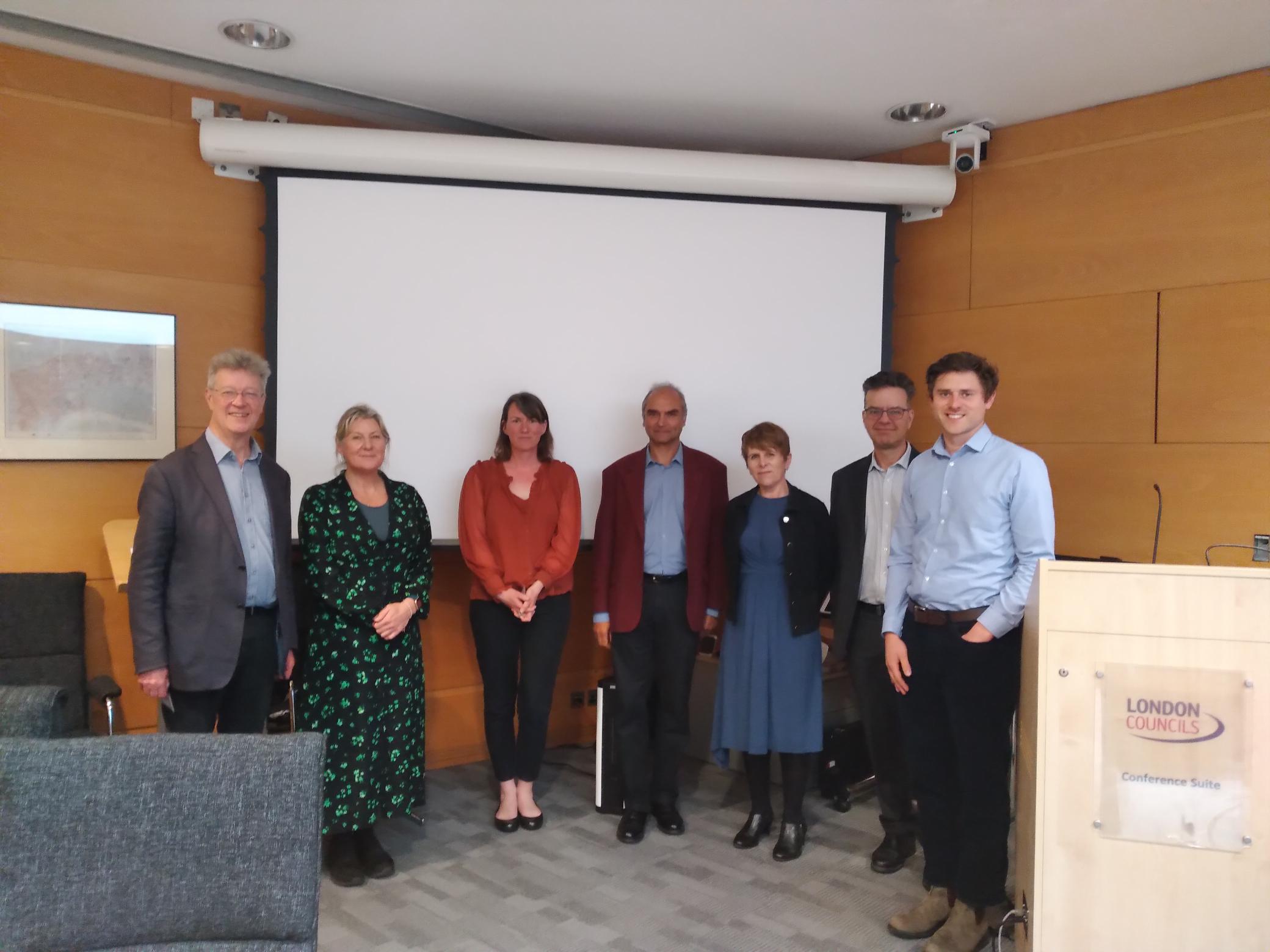London Councils Event

Published on 11 May 2023 12:38 PM
Event recap: Public toilet provision in times of financial pressures
Our campaign for better public toilet provision across London ploughs on. While we’ve been busy supporting local campaigners to engage their representatives, we’ve also worked to engage council staff – those with remits related to the provision and maintenance of community infrastructure.
Last month, in partnership with London Councils, we invited council staff from every borough to attend a conference on public toilets. Entitled ‘Improving public toilet provision in times of financial pressures" the event promised a morning of insightful presentations and engaging discussion centred around one question - how, when council budgets are notoriously tight, can local authorities best address lacking provision of loos? Chaired by Age UK London Trustee Dr Tony Burch, our conference set out to provide some answers.
The benefit of a toilet strategy
Kicking off our speaker presentations, Nicola Pitman of Cardiff Council had kindly made the journey to share their work towards a toilet strategy. Local authorities in Wales have a statutory requirement to have a strategy for public toilet provision, and Cardiff were keen to pair this with their existing initiative towards being age friendly. Conducting audits on how suitable their facilities were for people with dementia was just one way that Cardiff Council achieved this.
Encouraging local authorities to devise a full-fledged toilet strategy with named officers responsible for its delivery is a recommendation featured in our report on London loos, so we were delighted to see a local authority demonstrate its benefits.
Modernising loos in the West End
Next up, Mark Banks of Westminster City Council shared the steps they’ve taken to modernise toilet provision. As you might expect, the Council faces unique considerations in what their public toilets must provide. Not only do these facilities need to be sufficient for both residents and the vast number of tourists visiting the West End alike, but they also need to serve the night-time economy. Mark described how tackling anti-social behaviour became a barrier to this. To this end, employing permanent staff and CCTV at appropriate facilities and installing temporary toilets were both essential measures to ensure toilets remained open and usable.
Underpinning Westminster City Council’s efforts was the cost-benefit analysis of maintaining suitable loos. While £6.5 million is a sizable budget to set aside for public toilets, this was seen by the Council not just as a public health investment, but one that would encourage more commerce and reduce the need for cleaning the streets.
Setting up Community Toilet Schemes
Homing in on specific policy detail, Kirsty Valentine of Tower Hamlets, Sam Hawksley of Lewisham Local and Alan Juriansz of Richmond upon Thames described the varying routes they’ve taken to implement Community Toilet Schemes in their areas. Community Toilet Schemes are one measure councils can implement to improve public toilet provision. This sees councils encouraging local businesses to open their toilets free of charge – no expectation of being a paying customer required.
While all three of our speakers’ schemes were met with success, there was considerable variation in how they got there. For instance, Tower Hamlets Council found that local businesses were happy to engage in the scheme without the financial incentive, relying instead on the goodwill of participants and the understanding that a higher number of participants would reduce the demand felt by each business. On the other hand, Lewisham Local and Richmond upon Thames Council felt they would have struggled to keep business on board without the promise of a stipend towards upkeep. This served a useful reminder that no single policy can provide a one-size-fits-all solution.
The importance of inclusive design
We then turned to Gail Ramster, researcher at the Helen Hamlyn Centre for Design. Exploring her work on Engaged – a research project exploring the potential to repurpose disused buildings as accessible lavatories - Gail’s work hammered home a crucial point in improving public toilet provision. Put simply, it’s not enough to simply have more of them – they need to be accessible and fit to serve everyone in the community. More importantly, accessibility doesn’t necessarily mean local authorities need to spend significantly more than they otherwise would. Low-cost measures, like contrasting colours and handrails, can make all the difference in deciding whether someone with an impairment can use a public toilet. Gail concluded by noting that, in many instances, the main obstacle to accessibility isn’t a lack of funding, but a lack of consideration in the planning stage.
With our speakers’ presentations drawn to a close and our attendees invited to share their thoughts over lunch, it was encouraging to hear the lively discussion that ensued. The future of public toilet provision across London still requires work, but this conference inspired a great deal of optimism amongst the Age UK London team and those who attended. We will continue campaigning for more numerous and more accessible public toilets across London. Keep up to date with our efforts at www.ageuk.org.uk/london/projects-campaigns/out-and-about/london-loos/
Dom Taylor is Campaigns Support Officer at Age UK London

